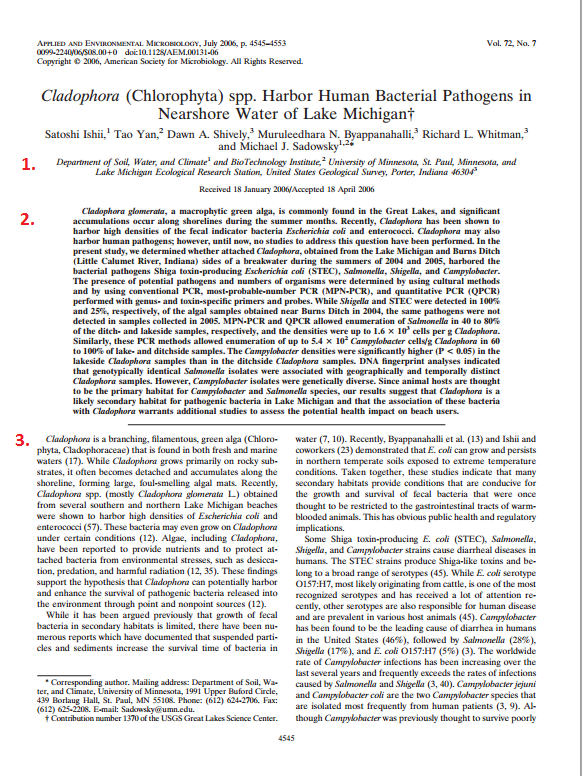Struggling to read your scientific scholarly article, even though it looks like it might be a perfect fit for your topic?
Try using the info below as a guidepost to help you understand the article. To begin, figure out if you're reading a Research Article or a Review Article.
Reading Research Articles
Start by looking for the distinctive markers of a scholarly article: are the authors' degrees or university affiliations listed? Do you see an abstract? How about charts, tables, graphs?
If you are using a scientific research article, you'll see the following distinctive sections:
- Abstract: a paragraph summary of the research question and findings
- Introduction: the research question: what did the scientists set out to know? Also provides context to the study: what did we know about the topic? Who answered the most important questions so far? Will include many citations.
- Method: the experiment design
- Results: The data gathered by the experiment
- Discussion: analyzes the results. What do we understand about the topic after the experiment has been conducted?
- Conclusion: lists further questions to be studied
- References or Works Cited: functions just as yours will. What research has been referenced throughout the paper?
Some of these sections may be merged with other sections, have slightly different names, be combined together (results and discussion often share a single section) or may not be labeled, but all should be present in one way or another.
Confused? Take a look at page one of a scholarly research article below:

Notice the following:
- The authors list a university affiliation
- The abstract is right in the center of the page
- The (unmarked) introduction
Want to take a closer look? Cladophora (Chlorophyta) spp. Harbor Human Bacterial Pathogens in Nearshore Water of Lake Michigan is a research article found on PubMedCentral, the government-sponsored free article database. You can use this as a model scholarly research article.
- Remember to start with your abstract. The summary will tell you where the authors are heading and help you to fight through confusing sections.
- Try reading your article out of order! (No one said we have to follow the rules all the time, right?) Start with the abstract, and skim through the Introduction and the Conclusion (Don't see one? Read the Discussion instead.) Note the hypothesis and article findings. Then read the whole article, remembering that the Materials and Methods sections are often long and full of complex concepts.
- Be careful to be very conscious of whatever section you're reading, because that will tell you the types of info that you're reading: are you in Methods? If so, you're looking at experimental design. Are you looking through Results? If so, you're looking at the data that was gathered, etc., etc.
- Check out this handy book that discusses reading and critiquing scholarly articles.
- This article, "To understand a scientific paper, delve into its parts" by Bethany Brookshire (a working scientist) also does a good job of breaking down scientific articles. The second article, Four tips for reading a scientific paper, also offers great advice on how to deal with dense language, as well as important questions to ask about any article you read.
- Remember that you can use reference databases to explain words or concepts that you're unfamiliar with. Try searching Credo or Gale to start.